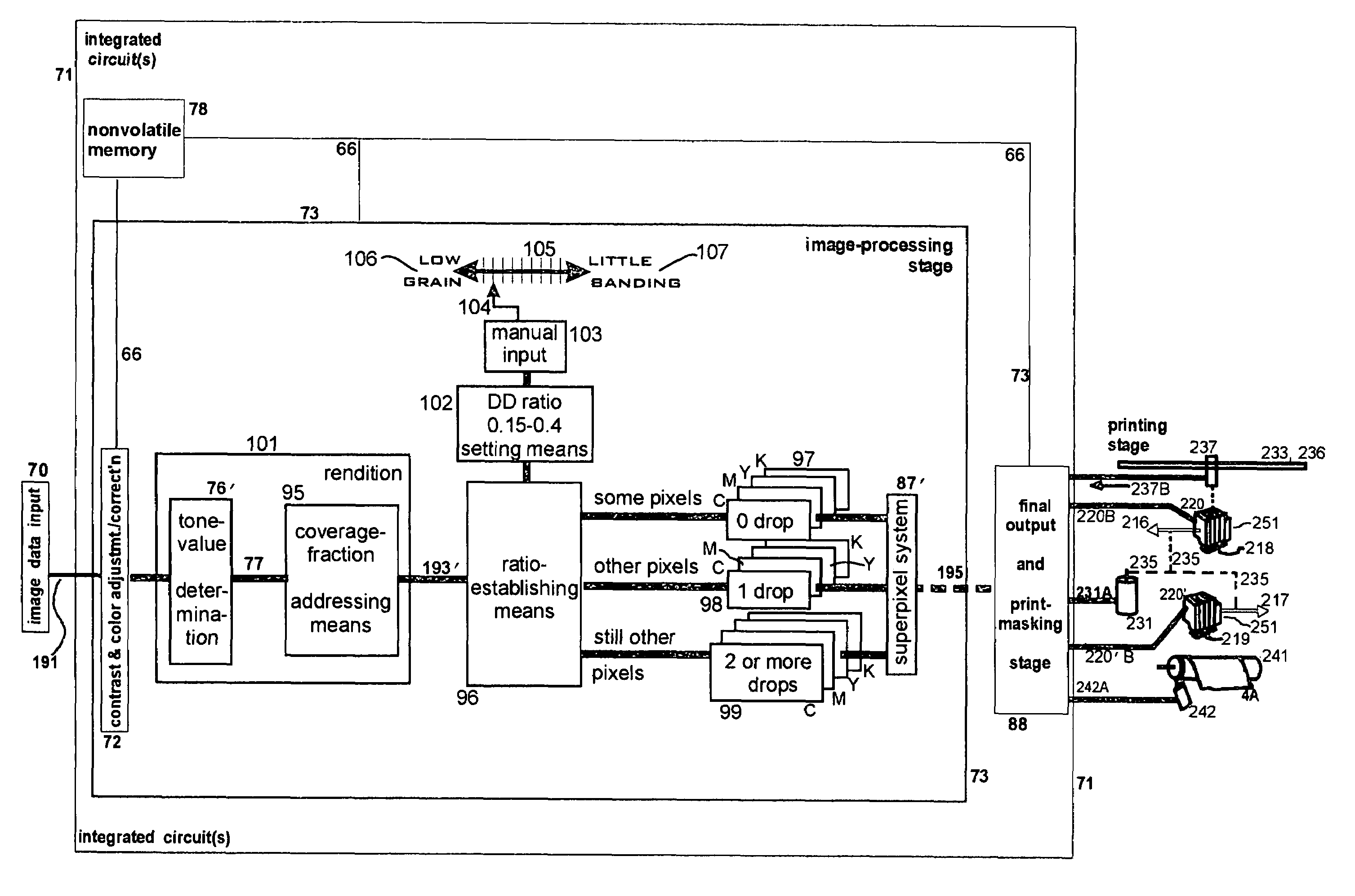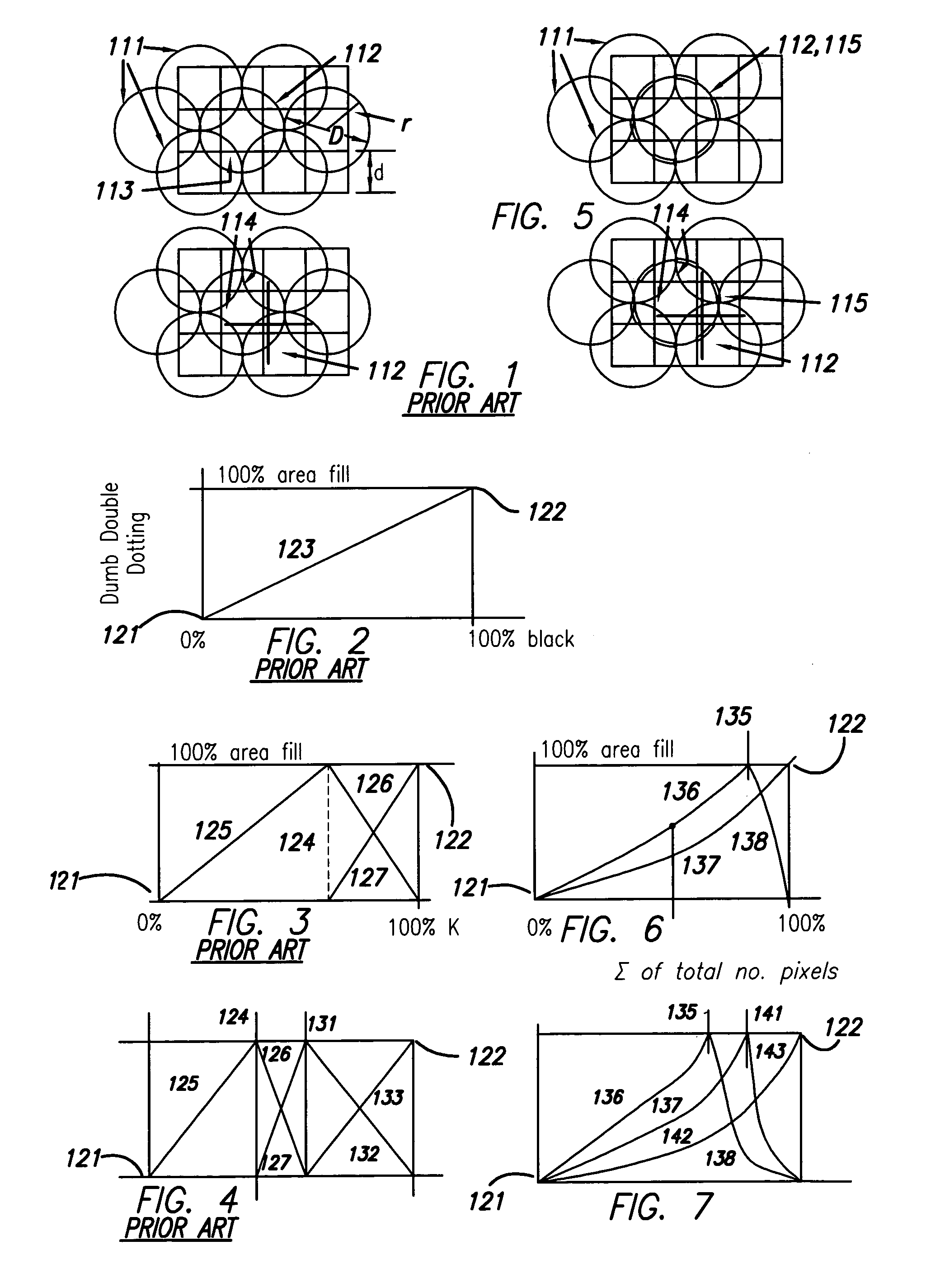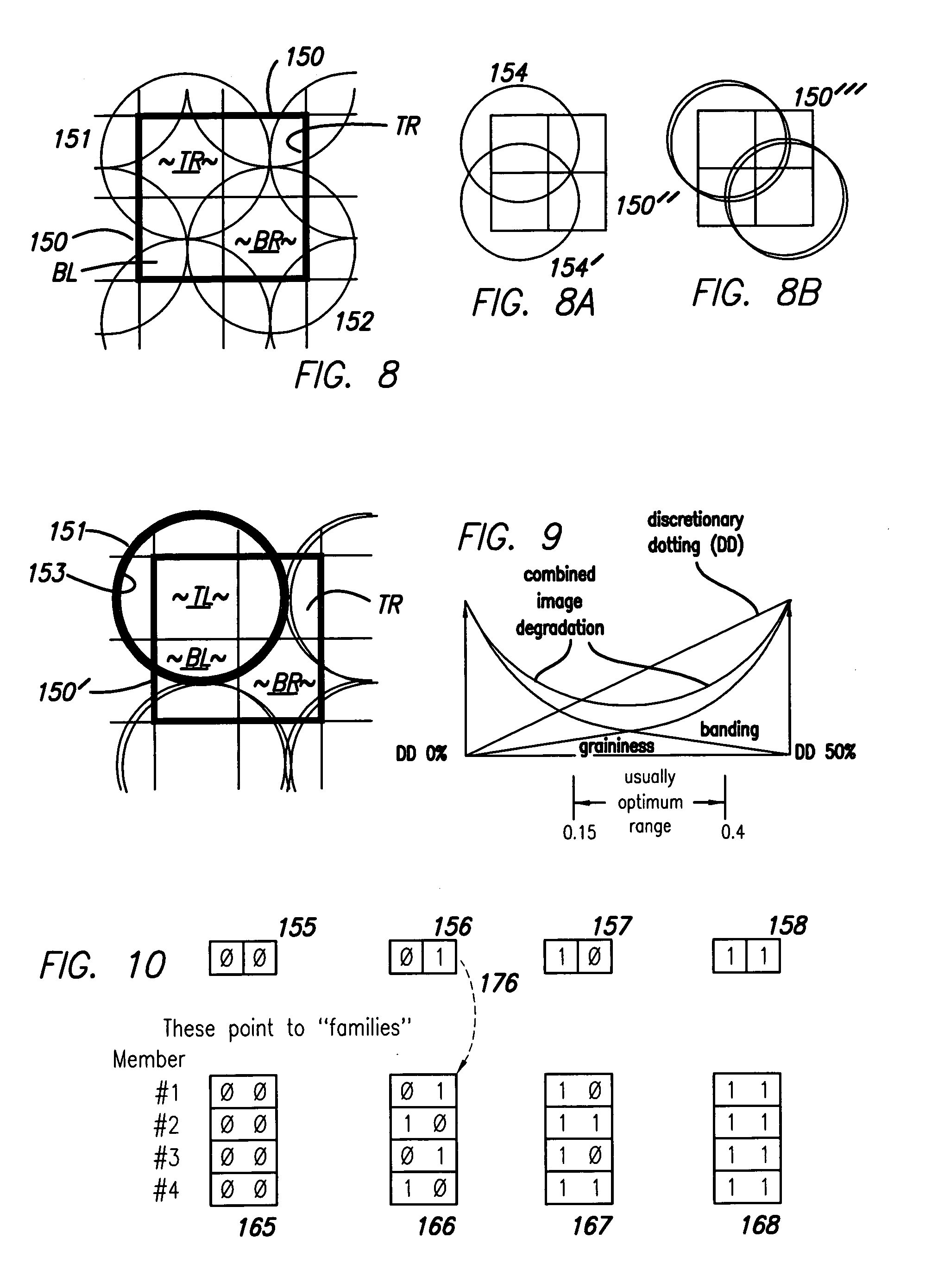Discretionary dotting for artifact control in incremental printing
a technology of incremental printing and discretionary dotting, which is applied in the direction of digitally marking record carriers, visual presentation using printers, instruments, etc., can solve the problems of inability to find single insight or cure, inability to find new solutions for various banding problems, and the act of aiming one single dot into a regular grid is actually the least robust method, so as to achieve the effect of unprecedented freedom from image-quality artifacts
- Summary
- Abstract
- Description
- Claims
- Application Information
AI Technical Summary
Benefits of technology
Problems solved by technology
Method used
Image
Examples
Embodiment Construction
1. Concurrent Plural-Drop Development
[0137]Another way to recognize the principles and practice of the invention, as introduced in the above summary section, is to see that the prior-art graphs of FIGS. 2 through 4 are no longer applicable. It is no longer true that two-drop pixel growth 127 (FIGS. 3 and 4) cannot begin until single-drop growth 125 has topped out and the system thereby reached an intermediate breakpoint 124.
[0138]Instead the number 136 (FIG. 6) of single-drop pixels and the number 137 of double-drop pixels both begin from the very smallest fractions of fill and the very finest saturations, at the origin 121. The total number of addressed pixels is the sum of the one-drop pixels 136 and two-drop pixels 137.
[0139]In preferred embodiments the two-drop pixel count 137 is some fraction—preferably a fixed fraction—of the single-drop count 136. The value of this fraction determines the banding / graininess tradeoff mentioned earlier, and may be set either automatically by th...
PUM
 Login to View More
Login to View More Abstract
Description
Claims
Application Information
 Login to View More
Login to View More - R&D
- Intellectual Property
- Life Sciences
- Materials
- Tech Scout
- Unparalleled Data Quality
- Higher Quality Content
- 60% Fewer Hallucinations
Browse by: Latest US Patents, China's latest patents, Technical Efficacy Thesaurus, Application Domain, Technology Topic, Popular Technical Reports.
© 2025 PatSnap. All rights reserved.Legal|Privacy policy|Modern Slavery Act Transparency Statement|Sitemap|About US| Contact US: help@patsnap.com



